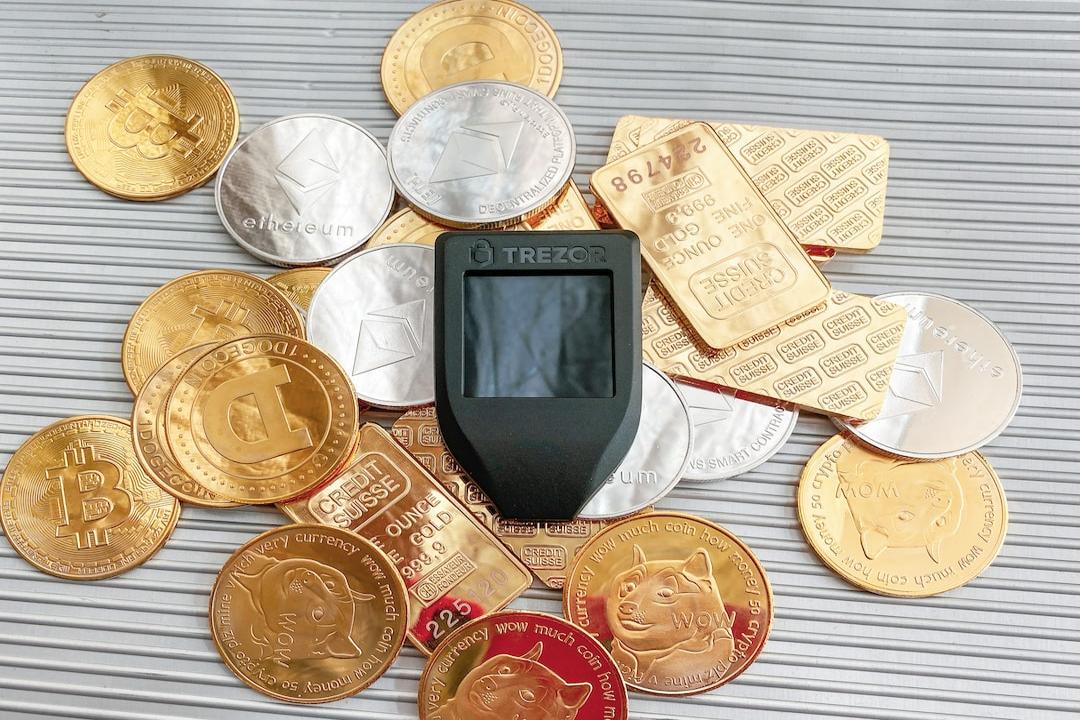Tariffs and Their Impact on the Cryptocurrency Market
Tariffs, as a long-established tool for regulating international trade, have long been known to affect traditional financial markets. However, with the rise of cryptocurrency as a “new player,” what is the relationship between trade policies and the prices of digital assets? This article is derived from a piece written by crypto.com, organized, translated, and authored by Blockchain Simplified.
(Background Summary: Bitcoin approaches 85,000; Trump’s reciprocal tariffs ignite discussions tonight. Analysts suggest BTC may have recorded its worst quarterly performance in three years, but a second wave of growth is still possible.)
(Background Supplement: Trump’s “4/2 Liberation Day” countdown for reciprocal tariffs; Citibank analyzes three potential scenarios.)
In early February 2025, U.S. President Trump announced new tariffs on Canada and Mexico, causing an immediate “plunge” in the cryptocurrency market. This downturn sparked heated discussions: how does government trade policy influence these digital assets, which originally aimed to “be independent”? This article will take you deep into how tariffs are “linked” to cryptocurrency prices, and the underlying mechanisms.
What are Tariffs?
Simply put, tariffs are the “tolls” that a country charges on imported goods and services. When a country imposes tariffs on a specific imported product, importers must pay additional fees to the government of that country. These extra costs typically end up being passed onto consumers, leading to higher prices.
The government collects tariffs primarily for several reasons:
- To generate revenue for the government: Before income taxes became popular, tariffs were a primary source of government revenue.
- To protect domestic businesses: By making imported goods more expensive, consumers are more likely to purchase domestically produced items.
- To negotiate terms: Countries use tariffs to negotiate trade with others, striving for favorable conditions or pressuring other nations to alter their policies.
- To balance imports and exports: If a country buys significantly more than it sells, tariffs may be imposed to reduce this “trade deficit.”
Though tariffs may seem straightforward, their economic impacts can be complex, affecting currency value, stock market fluctuations, consumer spending, and even national monetary policy.
How Do Tariffs “Stir the Waters”?
To understand how tariffs impact cryptocurrencies, one must first grasp how they operate within the broader economic system. Once the government announces tariffs, the following process unfolds:
- Announcement: The government specifies which imported goods or services will be taxed, with rates typically calculated as a percentage of the product’s value.
- Collection: When these taxable goods enter the country, importers must pay the tariffs at customs.
- Price Increase: Importers are unlikely to absorb these costs themselves; they will pass the added expenses onto consumers, raising prices.
- Consumer Choices: Seeing higher prices for imports, consumers may opt for domestic alternatives or simply reduce their purchases.
- Chain Reaction: Changes in consumer behavior affect domestic producers and related industries, ultimately leading to broader economic changes.
For example, if the U.S. imposes a 25% tariff on imported steel, American buyers must pay an additional 25%. This benefits U.S. steel manufacturers, making their products more competitive. However, companies that rely on steel as a raw material may face increased costs, which could hurt their profitability.
These economic changes do not occur in a vacuum. Financial markets react based on expectations of corporate profits, economic growth, inflation, and potential retaliatory measures from other nations in response to tariffs.
Historical Impact of Tariffs on Traditional Financial Markets
There are numerous historical records documenting how traditional financial markets respond to tariff policies. Examining past examples can help us understand how the cryptocurrency market might react.
- Stock Market Volatility: Major tariff announcements often lead to significant instability in the stock market. During the U.S.-China trade tensions of 2018-2019, new tariff news frequently caused sharp declines in the S&P 500 index, particularly in industries directly affected, such as manufacturing, agriculture, and retail.
- Currency Fluctuations: Tariffs frequently alter the value of different countries’ currencies. A country imposing numerous tariffs may see its currency appreciate in the short term due to reduced demand for foreign goods. However, if other nations retaliate with tariffs, the initial country’s currency may depreciate as its products become less competitive abroad.
- For instance, during the 2018 trade war, the Chinese yuan depreciated significantly against the dollar, partially offsetting the impact of U.S. tariffs on Chinese exports, keeping Chinese goods relatively affordable even with tariffs.
- Bonds as a “Safe Haven”: During trade disputes, government bonds, viewed as safer assets, become more popular as investors seek to hedge against risk, leading to lower yields on bonds from stable countries.
- Price Increases: Tariffs directly raise the costs of imported goods, contributing to inflation, which may prompt central banks to take measures such as raising interest rates to control inflation—actions that typically affect all financial markets.
Understanding traditional markets’ historical responses to tariffs enables us to better predict potential reactions in the cryptocurrency market.
How Tariffs Might Affect the Cryptocurrency Market
The relationship between tariffs and cryptocurrency prices is quite complex and continuously evolving. Although the initial goal of cryptocurrencies was to operate outside government control, increasing evidence suggests that they are not entirely immune to macroeconomic influences.
Recent Market Reactions
As mentioned earlier, from late February to early March 2025, following President Trump’s confirmation of new tariffs on Canada and Mexico, the cryptocurrency market experienced a downturn. While the announcement was made on February 1, the actual implementation was delayed until March 4.
Upon the news breaking, Bitcoin’s price fell significantly, triggering a series of market liquidations. This indicates that even though cryptocurrencies were initially designed to be independent of government influence, investors are increasingly considering traditional macroeconomic policies when making trading decisions.
Trump stated at the time that the U.S. was being “taken advantage of” in trade by its partners, necessitating the tariffs. However, the immediate market reaction reveals that cryptocurrency investors have become highly sensitive to these macroeconomic policies.
Potential Channels of Impact
Tariffs may influence cryptocurrency prices through several channels:
- Deteriorating Risk Sentiment: Tariffs introduce economic uncertainty, leading investors to perceive risks as too high to hold perceived risky assets like cryptocurrencies, prompting them to sell. While some hope Bitcoin will act as “digital gold” during economic turmoil, market performance indicates many still view it as a high-risk asset, selling off at the slightest disturbance.
- Stronger Dollar, Weaker Coins: Historical data suggests that the price trends of Bitcoin and many other cryptocurrencies often run counter to the dollar. If tariffs strengthen the dollar in the short term (which can happen), cryptocurrency prices may decline.
- Decreased Global Capital Flow: Trade restrictions might reduce global economic activity and capital flow. As liquidity diminishes within the financial system, demand for speculative investments like cryptocurrencies may also decrease.
- Increased Mining Costs: For cryptocurrencies like Bitcoin that require “mining,” tariffs on computer hardware (especially ASIC chips used for mining) could raise mining costs directly, potentially leading miners to shut down operations, thereby decreasing the overall security of the Bitcoin network and indirectly affecting its price.
- Tighter Government Regulation: During tense trade relations, governments typically impose stricter regulations across various sectors. Investors may worry that countries engaged in trade wars might also include cryptocurrencies in their more stringent regulatory frameworks.
Different Cryptocurrencies, Different Responses
Different cryptocurrencies may respond differently to tariffs:
- Bitcoin: As the largest cryptocurrency by market capitalization, and with increasing institutional investment, Bitcoin is becoming more like a traditional risk asset during market downturns. This means that if trade tensions escalate, Bitcoin’s price may decline.
- Stablecoins: “Stablecoins” pegged to fiat currencies like the dollar may become more popular during trade disputes, as traders may prefer to hold stable assets while remaining engaged in the cryptocurrency market for future opportunities.
- Utility Tokens: Cryptocurrencies linked to specific blockchain applications may be more directly affected by tariffs impacting their associated industries rather than overall market sentiment.
Conclusion
The relationship between tariffs and cryptocurrency prices represents an interesting intersection between traditional economic policy and emerging financial technologies. While the original design of cryptocurrencies aimed for independence from government monetary policies, market evidence increasingly indicates that they remain sensitive to macroeconomic forces, including trade policies.
The market’s reaction to President Trump’s announcement of tariffs on Canada and Mexico in February 2025 is a clear example. Therefore, cryptocurrency investors should closely monitor global macroeconomic policies. Despite the unique advantages of cryptocurrencies compared to traditional assets, they remain part of the global financial system, reacting sensitively to changes in macroeconomic policy.


